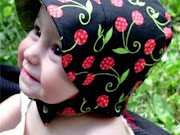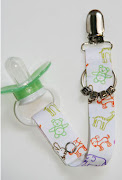At some point in the life of a parent, it becomes necessary to talk with your child about discrimination, prejudice or more simply, the things that make people different from one another. Whether its race, religion, culture or skin color, children are naturally curious and will ask questions. The important thing, if you are a parent, is to know what to say and how to answer their questions when the time comes.
The age of the child is one of the most important things to consider when talking to children about racial differences. Children from ages 2-3 begin to notice physical aspects of identity and gender. This is followed by curiosity about skin color, hair color and texture, eye shape and color. They may also begin to recognize cultural differences and they may show signs of "pre-prejudice" such as acting afraid, uncomfortable or avoiding or ignoring other children they perceive to be different. Three-and 4-year-olds begin to seek answers to their questions about differences. They show a greater awareness of appearances and they ask questions about where they got their own skin, hair, and eye color. Five-year-olds begin to build a group ethnic identity, as well as an individual identity within that group. They are more capable of exploring the differences and similarities between groups. They accept the use of categories and begin to look to see where they fit in. Six-to 8-year-olds begin to realize that their ethnicity is not changeable. They begin to become aware of attitudes for and against racial, religious, and cultural groups and they are highly influenced by significant adults, peers, and the media. Cultural pride may also begin to develop at this age. Nine- to 12-year-olds become more aware of the attitudes and behaviors within institutional settings and they also begin to get a clear understanding of the struggles against bias and are more willing to discuss culture, race, and differences.
Once we understand the capabilities of our children to understand our answers, we must then decide what to tell them! There is no perfect script and ultimately your discussion will probably not be perfect, but opening the door to communication is the first step to stopping hate, prejudice and inequality and to opening your child’s eyes to the diversity around them. Regardless of your child’s age, you can use the following pointers to help you discuss this difficult topic.
Do not pretend everyone is the same: Children are not blind to the fact that people look, dress and speak differently from them. They need simple, truthful and accurate information that addresses those differences and helps to reduce their fearfulness or hesitation.
Talking about prejudice does not increase its prevalence: Children do not learn prejudice from having open, honest discussions about physical differences. They learn prejudice from the media, peers and influential figures in their lives. If you are accurate with your information and you help your child to be consistent with their actions regarding discrimination then your child will be more likely to know what to do and how to behave when confronted with a situation that requires them to act appropriately.
Discuss what is different as well as what is the same: It is important that children understand that what makes us different, makes us who we are. Although it is important that we focus on inner qualities more often than outer, we should not ignore the differences; rather we should attempt to explain that often customs, manner of dress or culture can be expressed in many ways.
Treat all questions with respect: Despite being awkward, embarrassing and at times, even humorous, you should try not to silence your child or to make them feel that they asked a forbidden question. This may keep them from discussing it with you in the future.
Answer questions clearly and honestly: Try to understand what they are really asking and give short, simple answers that children can understand. Try not to over explain and if you don't know an answer, say so. If you give a wrong answer, correct yourself. Give children simple, factual answers to questions rather than general “all-encompassing’ statements.
Despite being a challenging conversation, it is an accomplishment as a parent just to start a dialogue about such an important and controversial topic. The more we know about how to talk to our children about the differences in our world, the better we can equip them to become open-minded, unbiased adults. We as parents can give our children the tools to make their world a more loving, accepting place just by providing them a comfortable place to voice their questions and concerns, and an ear to listen to what they have to say.






















No comments:
Post a Comment